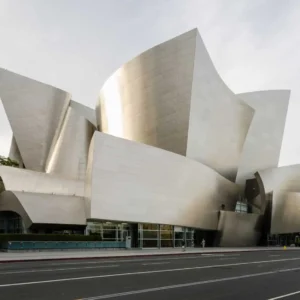FUNCTION FOLLOWS FORM
Function follows Form is a method of narration that creates a storyboard through the form of the structure. The significance of form is maybe one of the most petulantly discussed subjects in contemporary architectural discussions. This principle was followed by architects in the classical period before it was altered by Louis Sullivan. Architects are extremely zealous to pursue a good form and not just merely suffice the function.
It is predominant to understand what does function and form independently mean to further study the interrelationship. The function is the purpose for which the building or space is designed whereas the form is the appearance of that designed building or space which is the liaison between mass and space. Now, to unambiguously try and get an understanding of the concept ‘Function follows Form’, consider an example of a fairground. The form of the fairground is predetermined and the function within can vary as per the requirement like fairs, stalls, political debate gatherings, social events, dance events, etc. This demonstrated that the form was decided first which then branched out options for the function.
Above all, architects today relate to the conception of creating a photographic exterior that will boon the portfolio of gleaned opportunities. This concept evokes that if function follows form then the outcome can be innovative. For example, the ‘Disney Concert Hall’ designed by Frank Gehry showcases an innovative design form that is unconventionally shaped and does not reveal much of the functions in the interior. His work is admired as the interior manifests the function visually and the design is thus beyond the exterior curved surfaces and metal reflective sheet. Though the structure has a complex plan and encountered technical challenges due to the shape and positioning of the interior, all the spaces are both visually and functionally striking. Majority of the structures seen today disregarding how small or big they are, what design style has been implied or where it is built, and for what, consolidates the concept of function follows form both in exterior as well as the interior.
What had altered is that, while function remains as a primary facet of architectural configuration and structural organization, formal impact and the plausible variations in form have profited. There are no restrictions and limitations to only straight lines and rectangles for designing, along with the computers and building technology that is so well-developed that it is plausible to build any form required. Another example of the principle ‘function follows form’ is the Sydney Opera House that is designed by Jorn Utzon. The structure successfully fulfills all the functional needs like social, symbolic, and psychological and also exhibits a remarkable design form that has attracted many tourists around the world.

In summary, this principle was followed in the classical period, later the architectural development was based on the altered principle of ‘Form follows Function’ during Modernism. Providentially, architects in the 21st century have comprehended that most of the design principles are facile and that it is essential to fulfilling functional needs, but it is not enough. A wiser, more comprehensive interpretation is that ‘function follows form’ rather they go together.
References:
- https://mfareview.wordpress.com/2011/10/21/function-follows-form-rethinking-the-%E2%80%98function%E2%80%99-of-%E2%80%98form%E2%80%99-in-architecture/
- http://www.tropicofchoice.com/function-follows-form/
- https://www.researchgate.net/post/Is_it_Form_follows_Functions_or_Function_follows_Form
- https://bravearchitecture.com/praxis/function-follows-form/
- https://www.washingtonpost.com/archive/realestate/2004/01/24/when-function-follows-form-the-result-can-be-innovative-architecture/439a678f-a623-4a09-a592-c6c11c61798d/
